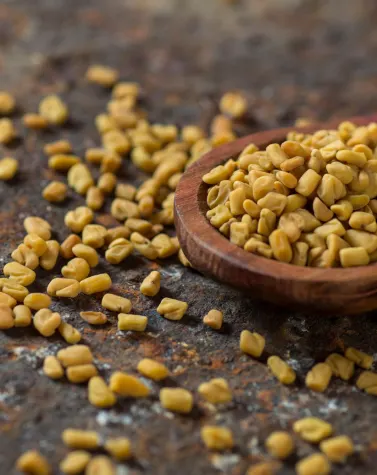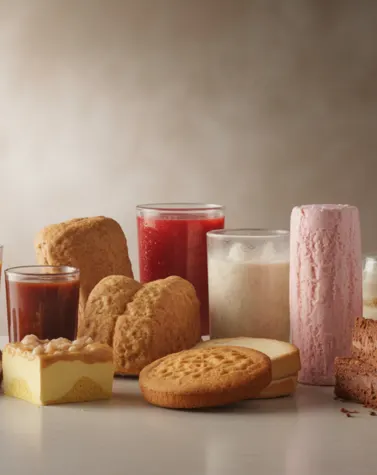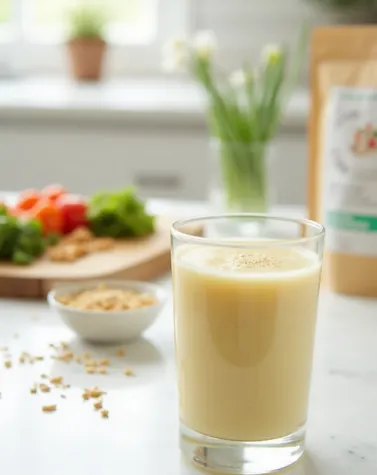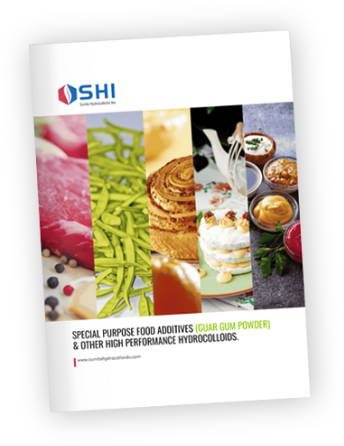
Understanding FDA Approved Food Stabilizers
Ever wonder why your yogurt is so creamy or your gluten free bread holds together? It’s because of food stabilizers. These are the food additives that help maintain texture, consistency and shelf life across a wide range of products from sauces and soups to baked goods and beverages.
The Food and Drug Administration reviews safety data and sets clear standards for how stabilizers can be used. Whether it is through the GRAS process or a formal food additive petition, both manufacturers and other sponsors must submit petitions for new food ingredients. FDA oversight helps protect consumers and build trust in the food supply. In this blog, we break down what FDA approved stabilizers really are and how they are regulated.
What Are Food Stabilizers?
Food stabilizers are the additives in food that prevent your favorite foods from separating. The packaged food you eat does not turn watery or lose its texture due to them. These are added to maintain consistency, improve texture, and extend shelf life.
Stabilizers are a broad category of additives used across processed foods, beverages and dairy. They help control moisture and support texture during storage and transport. You’ll find them in everything from salad dressings to your ice creams.
There are four main types of stabilizers used in food production:
- Emulsifiers: help mix oil and water based ingredients
- Thickeners: increase viscosity and improve mouthfeel
- Gelling agents: create structure and firmness
- Hydrocolloids: are water binding agents that support texture and stability
Some stabilizers can also act as flavoring agents or flavor enhancers in certain food products, contributing to improved taste and aroma.
Common examples:
- Guar gum is a natural hydrocolloid used in dairy, bakery and gluten free products
- Xanthan gum is known for its ability to hold up in acidic or frozen conditions
- Carrageenan is derived from seaweed and used in creamy or plant based applications
Other common food additives like salt and sugar are also used to enhance flavor and preserve texture in many processed foods.
FDA’s Role in Regulating Food Stabilizers
When it comes to food stabilizers, safety is a non negotiable. Stabilizers are reviewed and regulated by the FDA to ensure safety and proper use. Every stabilizer used in food must meet strict safety standards. The FDA’s primary goal is to protect public health. The agency also ensures the food supply remains nutritious. The FDA evaluates food additives through two main pathways:
A. GRAS Status (Generally Recognized As Safe)
Some stabilizers like guar gum qualify as GRAS ingredients. This means they’re widely accepted as safe by experts based on long standing use or solid scientific evidence. GRAS substances don’t need FDA approval but must meet the same safety standards. Food manufacturers can self affirm GRAS or submit to the FDA for review. If the agency agrees, it issues a ‘no questions’ letter confirming safety.
B. Food Additive Petition Process
If a stabilizer doesn’t qualify as GRAS, it must go through the food additive petition route. This involves:
- Submitting detailed data on how the ingredient is made
- Describing how it will be used in food
- Toxicology studies and safety assessments
- Estimating consumer exposure levels
The FDA reviews this to determine if the additive meets the standard of ‘reasonable certainty no harm’. If approved, they publish a regulation outlining how the additive can be used. This protects the consumer and gives the manufacturer confidence to use FDA approved additives such as stabilizers and color additives across many applications.
For more on how the FDA regulates food additives and GRAS ingredients, check out their official guide. Whether you’re formulating a new product or scanning a label, understanding how stabilizers work helps you choose food additives that deliver performance and meet consumer expectations.
Types of FDA Approved Food Stabilizers
There are two main categories of stabilizers.
- Natural Stabilizers – These are derived from plant or microbial sources and are often preferred for clean label formulations.
Common examples:
- Guar gum is a natural hydrocolloid from guar beans used in dairy, bakery and gluten free products
- Pectin is extracted from fruits and is ideal for jams, jellies and fruit fillings
- Agar is sourced from red algae and used in desserts and plant based applications
- Synthetic Stabilizers – These are chemically modified food additives designed for consistent performance across processing conditions.
Common examples:
- Modified starches offer heat and freeze stability in sauces, soups and fillings
- Cellulose derivatives are used in processed foods for thickening and moisture control
Natural vs Synthetic Stabilizers
| Feature | Natural Stabilizers | Synthetic Stabilizers |
| Source | Plant or microbial | Chemically modified plant-based |
| Label appeal | Clean label friendly | May require technical labeling |
| Performance consistency | May vary with conditions | Highly predictable |
| Common examples | Guar gum, pectin, agar | Modified starches, methylcellulose |
| Use cases | Dairy, bakery, fruit fillings | Sauces, gravies, processed foods |
How to Identify Stabilizers on Food Labels
Ever flipped a food label and wondered what those long ingredient names or cryptic codes actually mean? If you’re scanning for stabilizers, here’s what to look for.
FDA Labeling Rules
The FDA requires all food additives including stabilizers to be listed by their common or chemical name on the ingredient panel. You won’t see vague terms like texture agent, you’ll see names like guar gum, xanthan gum or pectin.
Common Names vs E-numbers
In the US, stabilizers are listed by name. In Europe, they often appear as E numbers:
- Guar gum = E412
- Xanthan gum = E415
- Carrageenan = E407
These codes group additives by function like thickeners or emulsifiers. If you’re sourcing globally, knowing both formats helps. For spotting stabilizers, look for gums, starches and cellulose derivatives.
Safety and Consumer Considerations
When it comes to food stabilizers, safety is a core requirement. Every stabilizer used in food must meet strict safety standards set by the FDA and that includes how much of it can be consumed daily without risk.
What Is ADI and Why It Matters
The Acceptable Daily Intake (ADI) is the amount of a substance that can be consumed every day over a lifetime without posing health risks. It is calculated using toxicology data and real world exposure estimates. For stabilizers like guar gum, the ADI helps manufacturers set usage levels that are both effective and safe. While stabilizers are generally well tolerated, some people may experience sensitivities. For example, carrageenan has raised concerns in certain digestive health circles.
FDA’s Ongoing Safety Oversight
The FDA continues to monitor stabilizers through post market surveillance, scientific reviews and adverse event reporting systems. If any new data suggests a risk, the FDA can revise or revoke approvals. You can search the FDA’s GRAS database to check the safety status of any ingredient.
For suppliers offering food grade guar gum, meeting ADI guidelines and staying aligned with FDA evaluations is key to building trust with buyers and consumers.
The Future of Food Stabilizers: Trends & Innovations
Brands are moving away from synthetic additives and leaning into plant based and clean label stabilizers that consumers can recognize and trust. That means more guar gum, pectin and agar and fewer food additives that sound like chemistry class.
Hydrocolloids are also getting smarter. New extraction methods and blends are improving performance across heat, freeze and pH conditions. Whether it’s a gluten free batter or a dairy alternative, manufacturers want stabilizers that work harder with less and buyers want to know where ingredients come from, how they’re processed and whether they meet FDA and GRAS standards.
Conclusion
FDA approved stabilizers are a safety checkpoint for every food product on the shelf. The FDA reviews each additive through GRAS status or formal petitions, making sure they meet strict standards before they reach consumers. That process helps manufacturers build trust and gives buyers confidence in what they’re choosing.
For anyone scanning labels or sourcing ingredients, knowing which stabilizers are approved and how they are regulated is a smart move and when it comes to clean label options, guar gum stands out. It is natural, versatile and backed by FDA safety evaluations. Whether you’re formulating dairy, gluten free or plant based food products, guar gum delivers performance without compromise.
Related Reading on Food Additives & Stabilizers
Want to expand your understanding of food stabilizers and their role in everyday products? Explore these expert insights:
- FDA Approved Food Thickeners : Learn how thickeners like guar gum and xanthan gum are regulated and used to enhance texture in sauces, soups, and dairy.
- Food Items That Include Gum : Discover common foods that contain gums like guar, xanthan, and carrageenan and why they’re essential for consistency and shelf life.
- What is Guar Gum? : Dive into the science and sourcing of guar gum, a natural hydrocolloid widely used in FDA-approved food formulations.





